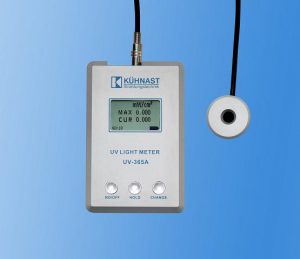Our Technical Solutions Group (TSG) is often contacted by photopolymer platemakers reporting an inconsistent floor. Typically, they measure the lamp output with a UV-A meter and see that the exposure bed is fairly consistent. They don't understand why early in the day things seem to be fine, but as several exposure cycles are performed, the floor and relief seem to lack uniformity. TSG has found that inconsistent polymerization can often be a result of inconsistent lamp temperature. Once the exposure bed gets up to temperature, typically the exhaust fans will start and keep the lamps at a consistent temperature. This is the point when we can expect and experience a very stable energy output (most often measured in mW/cm2). This also results in a very consistent floor thickness, ranging only ± one thousands of an inch.
We reached the logical conclusion that the fans needed to be on when making plates in these types of exposure units. The optimal exposure temperature of these UV-A lamps is very close to 108°F. However, as the exposure unit continues to warm up, the fans remain off based on the model of the device. If the lamps are allowed to reach higher temperatures, and approach up to 120°F, approximately 20% of their output is diminished. As the lamps approach 140°F, the output drops approximately 30%. This is because the mercury changes from a liquid to a gas, at which point the energy begins to be absorbed. As the output switches spectrums from UV to more white light, the UV energy level drops significantly.
In addition to measuring the lamp output of your exposure unit, take time to monitor the temperature of the exposure bed as well. Some newer plate making equipment has features that tell you the exact temperature within the unit. For units without this technology, temperature may need to be monitored manually.

If you want to learn more about this subject, please feel free to reach out to us by calling 1-800-445-4017, or by e-mail at: [email protected].
All Printing Resources has formed our Technical Solutions Group (TSG) to encompass our full range of expertise in all critical areas of the flexo process. This team is made up of industry professionals dedicated to being up-to-date on new technologies along with best practices. They are armed with the latest in diagnostic tools, and are experienced in problem-solving that can achieve sustainable results. The TSG have walked in your shoes, and have felt your pain.
Tim Reece - All Printing Resources, TSG Team Member – Has over 34 years experience in narrow to wide web flexo. Tim joined APR eighteen years ago with his primary focus being on technical services and training. Tim has certified and re-certified 3 times by the NCSS as an Expert Press Operator and is Level III FIRST Certified Implementation Specialist. He has spoken for the TLMI on training and process improvement and has presented at FTA Forums and InfoFlex as well as serving as a judge for the FTA printing awards on four occasions, and now serves on the committee. Specialty areas include photopolymer platemaking processes and development, primary pressroom converting, and sustainability.
